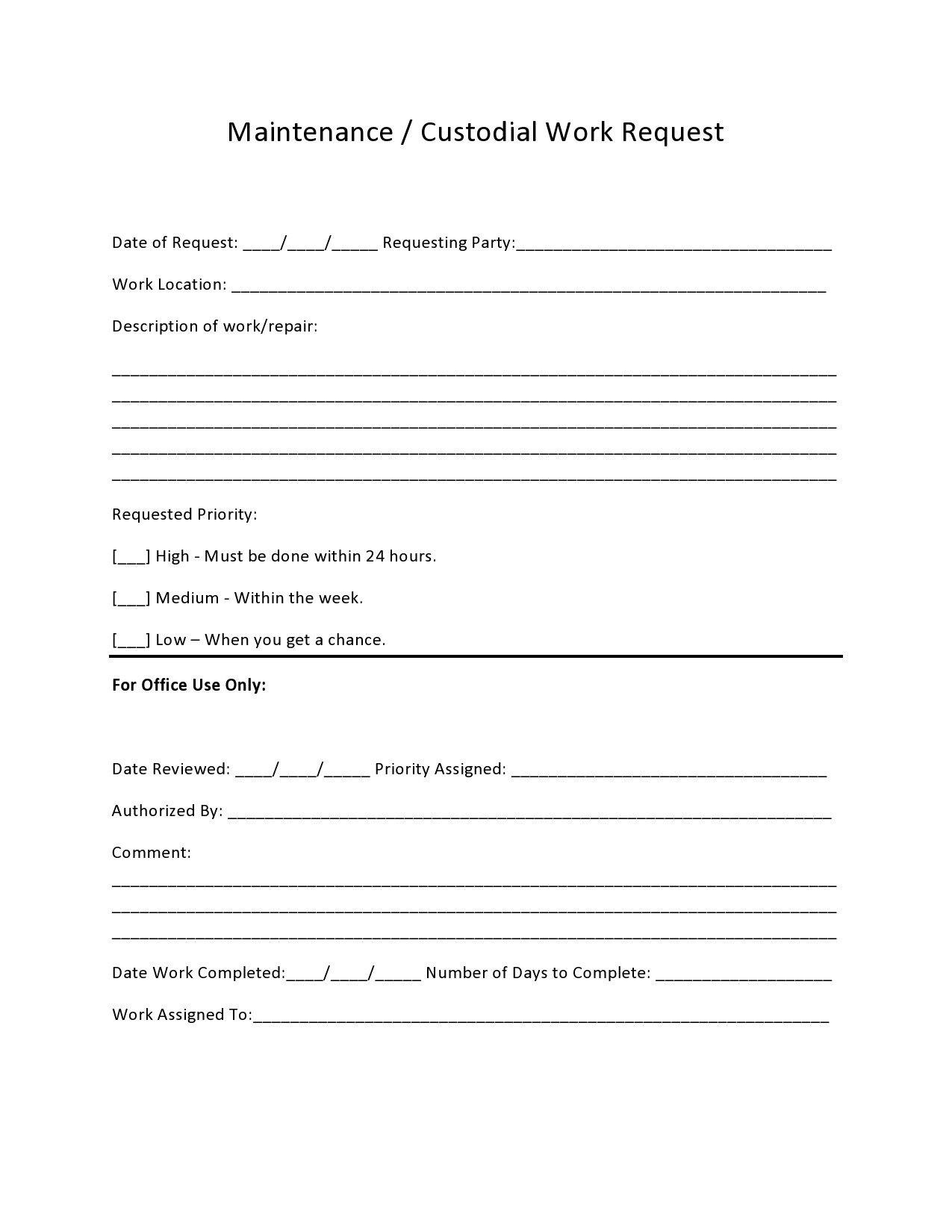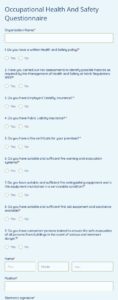Implementing standardized forms offers several advantages. It reduces ambiguity in requests, leading to quicker responses and more effective repairs. This clarity also minimizes errors and prevents misunderstandings between those submitting requests and those fulfilling them. Furthermore, a consistent format simplifies record-keeping for future analysis and budgeting.

The following sections will delve deeper into the key components of effective maintenance request forms, explore best practices for their implementation, and provide examples of various formats suitable for different contexts.
Key Components of a Maintenance Request Form
Effective maintenance request forms capture essential information to ensure efficient processing and resolution. These key components facilitate clear communication between requesters and maintenance personnel.
1. Requester Information: Clear identification of the individual submitting the request, including name, contact information, and department/location.
2. Date and Time: Precise recording of when the request was submitted and, if applicable, when the issue was first observed.
3. Location Details: Specific information about the location requiring maintenance, including building, room number, or other relevant identifiers.
4. Problem Description: A detailed and concise description of the issue, including any relevant observations or symptoms.
5. Priority Level: An indication of the urgency of the request (e.g., low, medium, high, critical) to facilitate prioritization of tasks.
6. Supporting Information: Any additional information that can aid in diagnosis and resolution, such as photographs or videos.
7. Authorization (if applicable): Designated spaces for required approvals or signatures based on organizational procedures.
Accurate and complete information in each of these areas contributes to timely and effective maintenance management, reducing downtime and preventing further complications. This structured approach supports efficient resource allocation and improves overall operational efficiency.
How to Create a Maintenance Request Template
Creating a standardized maintenance request template ensures clarity and efficiency in handling maintenance tasks. A well-designed template facilitates accurate information gathering, streamlines communication, and improves overall maintenance management.
1. Define Required Information: Determine the essential data points needed for effective processing of maintenance requests. Consider factors such as requester identification, location details, problem description, priority level, and required authorization.
2. Choose a Format: Select an appropriate format for the template. Options include digital forms, spreadsheets, or dedicated software. Consider accessibility and ease of use for both requesters and maintenance personnel.
3. Design the Layout: Structure the template logically to ensure clear and organized information flow. Group related fields together and use clear labels for each input area.
4. Incorporate Input Validation: Where possible, implement input validation to ensure data accuracy and consistency. This might include dropdown menus for predefined selections or required fields to prevent incomplete submissions.
5. Establish a Submission Process: Define a clear procedure for submitting completed requests. This could involve electronic submission, designated drop-off locations, or integration with a computerized maintenance management system (CMMS).
6. Test and Refine: Pilot test the template with a small group of users to identify any areas for improvement. Gather feedback and refine the template based on user experience and practical application.
7. Implement and Train: Communicate the new template and its usage guidelines to all relevant personnel. Provide training as needed to ensure proper utilization and consistent application.
8. Regularly Review and Update: Periodically review the template’s effectiveness and make necessary revisions based on evolving needs and feedback. This ensures the template remains a relevant and valuable tool for managing maintenance requests.
A well-structured template, combined with clear communication and training, promotes effective maintenance management. This proactive approach contributes to efficient resource allocation, minimizes downtime, and enhances overall operational efficiency.
Standardized forms for submitting maintenance requests provide a crucial foundation for efficient facility management. From clear communication and streamlined workflows to improved resource allocation and data-driven decision-making, the benefits are substantial. By implementing a well-designed template and adhering to best practices, organizations can optimize maintenance operations, minimize disruptions, and enhance overall operational efficiency. This structured approach facilitates timely responses, reduces errors, and supports proactive maintenance strategies.
Effective maintenance management requires continuous improvement and adaptation. Regularly evaluating and refining the maintenance request process, along with leveraging technological advancements, will ensure ongoing effectiveness and contribute to a well-maintained and productive environment.
